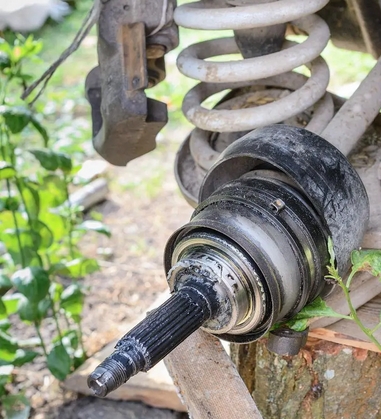
Spline shafts, a component that plays a crucial role in the automotive industry, are often overlooked by consumers. However, their presence is irreplaceable in enhancing vehicle performance and ensuring driving safety. This article will delve into the function of spline shafts, their application in the automotive industry, and how they contribute to the improvement of vehicle performance.
First, let's understand the definition and structure of spline shafts. A spline shaft is a type of shaft component that connects with transmission parts such as gears and synchronizers through splines. The unique structure of the spline shaft offers high strength and rigidity, enabling it to withstand significant torque and load. The material of spline shafts is typically high-quality carbon steel or alloy steel, which, after heat treatment and surface treatment, exhibits excellent wear resistance and fatigue resistance.
In the automotive industry, the application of spline shafts is extensive. They are primarily used in key transmission system components such as engines, transmissions, and drive axles. The engine, as the heart of the vehicle, directly affects the driving experience with its performance. The application of spline shafts in engines is mainly reflected in connecting the crankshaft and camshaft, as well as in the transmission of torque and power. The transmission, an essential device for power transmission in vehicles, uses spline shafts to connect the input and output shafts, thereby transferring power to meet the vehicle's varying speed and torque requirements. The drive axle, as the power output part of the vehicle, connects the drive wheels and the engine with the spline shaft, transferring power to the wheels and propelling the vehicle.
The application of spline shafts in the automotive industry not only enhances vehicle performance but also ensures driving safety. The high strength and rigidity of spline shafts allow vehicles to carry heavier loads or more passengers. At the same time, the wear resistance and fatigue resistance of spline shafts guarantee their reliability and stability during prolonged operation, reducing the failure rate and minimizing the occurrence of accidents. Moreover, the design and manufacturing precision of spline shafts directly affect the vehicle's smooth operation and fuel efficiency. Therefore, the superior performance of spline shafts plays a key role in enhancing the overall performance of vehicles.
To further enhance the application effectiveness of spline shafts in the automotive industry, we need to make efforts in the following areas. First, strengthen the research and development and selection of materials for spline shafts, opting for high-performance materials to improve their wear resistance and fatigue resistance. Second, adopt advanced manufacturing processes and equipment to enhance the manufacturing precision and surface quality of spline shafts. Third, reinforce the assembly and tuning of spline shafts to ensure their compatibility and coordination with transmission components. Lastly, strengthen the inspection and quality control of spline shafts to ensure their reliability and stability during use.
In conclusion, as a key component in the automotive industry, spline shafts are irreplaceable in enhancing vehicle performance and ensuring driving safety. By strengthening efforts in material research and development, manufacturing processes, assembly tuning, and quality control of spline shafts, we can further improve their application effectiveness in the automotive industry and make greater contributions to the development of the automotive sector.





 Customer service 1
Customer service 1  Customer service 2
Customer service 2